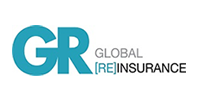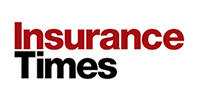Residential conveyancing continues to give rise to the highest number of negligence claims amongst small to medium sized law firms according to Aon.
Aon has reviewed the claims history of legal firms with up to 10 partners over a four-year period (from 2000 to 2004) and found that over one in every three claims (35%) is related to conveyancing (29% residential, and an additional 6% attributable to commercial conveyancing).
Personal injury also scored highly, with one in five claims (20%) emanating from this line of legal work.
Aon's research also analysed claims in terms of average value and found that the commercial sector was in pole position with average values nearly five fold those of residential conveyancing.
In turn, the average cost of a residential conveyancing claim is approximately one third of a commercial conveyancing claim, but given the high frequency of residential conveyancing claims, it remains the highest single costs factor to insurers.
Further analysis revealed that most residential conveyancing negligence claims, by number or value, stem from mistakes made in carrying out procedural issues related to the work - particularly failure to undertake sufficient property searches or misreading a property search - or failure to correctly advise the client on points of law.
Common problems in personal injury cases relate to limitation and service deadlines.
Martin Thomas, managing director of Aon's claims solutions team said: “Based upon our experience, the majority of claims causes flow from three core areas: timing issues, drafting errors, or advice which is not properly thought out, misleading or simply factually and, or, in some cases, legally incorrect.
“In addition, the use of computers creates an environment where errors are easily produced (via improper cutting and pasting, or poor version control), are hard to spot and are replicated in seconds. Sometimes getting a colleague to proof read a contract or legal document can make all the difference to the firm's claims experience and its outgoing costs. The more paid claims that an individual firm experiences, the less attractive they are to insurers, and the greater amount of premium they will need to pay for their cover.”
Angus Cameron, executive director, Aon's professional risks unit, added: “No firm wants to be paying over the odds for insurance cover and so it is in their best interest to reduce their claims frequency. In order to protect themselves, firms need to assess their potential level of exposure and embed robust risk management systems. For example, areas of focus might include time recording systems, supervision levels and knowledge bases.
“The ultimate risk management initiative is the implementation of Lexcel 2004, the Law Society's industry standard, but not all practices are willing to dedicate the financial resources required to do this. For this reason, Aon and insurer QBE have devised a gap analysis service that enables firms to better understand their strengths and weaknesses and the scope for improvement in their procedures.”
Hosted by comedian and actor Tom Allen, 34 Gold, 23 Silver and 22 Bronze awards were handed out across an amazing 34 categories recognising brilliance and innovation right across the breadth of UK general insurance.












































